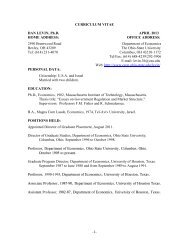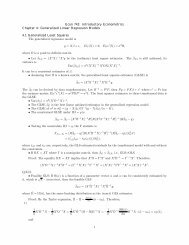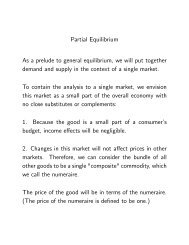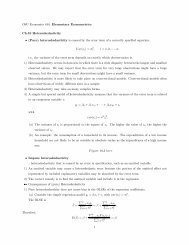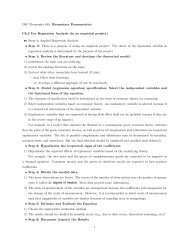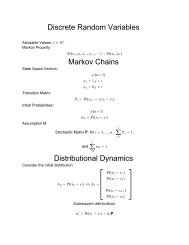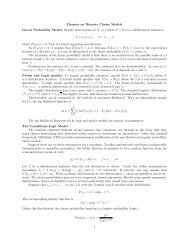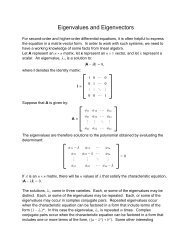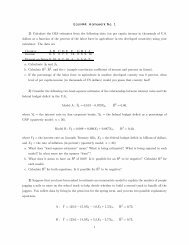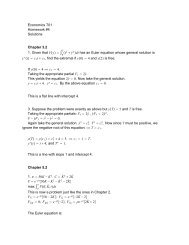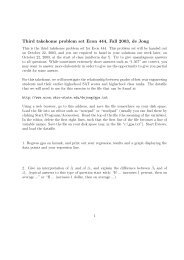Social Interactions and Endogenous Association - Department of ...
Social Interactions and Endogenous Association - Department of ...
Social Interactions and Endogenous Association - Department of ...
You also want an ePaper? Increase the reach of your titles
YUMPU automatically turns print PDFs into web optimized ePapers that Google loves.
that group size facilitates segregation <strong>and</strong> show that there is a stronger relationship<br />
between own characteristics <strong>and</strong> associates’ characteristics in large macro-groups.<br />
While estimating the effect <strong>of</strong> endogenous sorting on behaviors is complicated,<br />
we provide evidence that endogenous association affects behavior. As indicated, our<br />
model implies that the availability <strong>of</strong> some like-minded individuals permits people to<br />
associate with people with the same behavioral tendencies, accentuating their own<br />
behavioral tendencies. Consistent with this implication, we show the mean behavior<br />
among the associates <strong>of</strong> people who are inclined to a particular behavior (based on their<br />
exogenous characteristics) are higher (relative to people whose characteristics imply that<br />
they are unlikely to have high levels <strong>of</strong> the behavior) in groups where there some people<br />
inclined to the same behavior. We also show that the availability <strong>of</strong> people who are<br />
inclined to a particular behavior increases the behaviors <strong>of</strong> people who are prone to that<br />
behavior relative to people whose characteristics imply that they are unlikely to have<br />
high levels <strong>of</strong> the behavior. Lastly, we provide some two-stage least squares estimates <strong>of</strong><br />
the effect <strong>of</strong> associates’ behaviors on own behavior.<br />
II. A Model<br />
II.A. The Framework<br />
This section develops a model <strong>of</strong> social interactions with endogenous association.<br />
People are characterized by observable characteristics, x, <strong>and</strong> an shock, ε . They choose<br />
an action, y, <strong>and</strong> a set <strong>of</strong> associations. An individual with characteristic x <strong>and</strong> shock ε<br />
who takes action y has a utility <strong>of</strong>,<br />
U<br />
1 2<br />
= β ′ xy + εy<br />
− y −<br />
144244<br />
2 3<br />
Private Utility<br />
cT {<br />
Cost <strong>of</strong><br />
<strong>Association</strong><br />
⎛ A ψ A 2<br />
A A′<br />
A ⎞ α<br />
+ ⎜θy<br />
y − y + ω′<br />
xy + x Φx<br />
+ γ ′ x y⎟T<br />
⎝144444444<br />
2<br />
244444444<br />
⎠ 3<br />
<strong>Social</strong> Utility<br />
This utility function has three components: a private utility; a cost <strong>of</strong> interacting; <strong>and</strong> a<br />
social utility. Variables with overbars <strong>and</strong> A-superscripts denote means among a person’s<br />
associates (<br />
A 2<br />
y denotes the mean <strong>of</strong> the squared values <strong>of</strong> associates’ actions). To<br />
5



